This One Grocery Swap Saves Me $40 Every Single Week
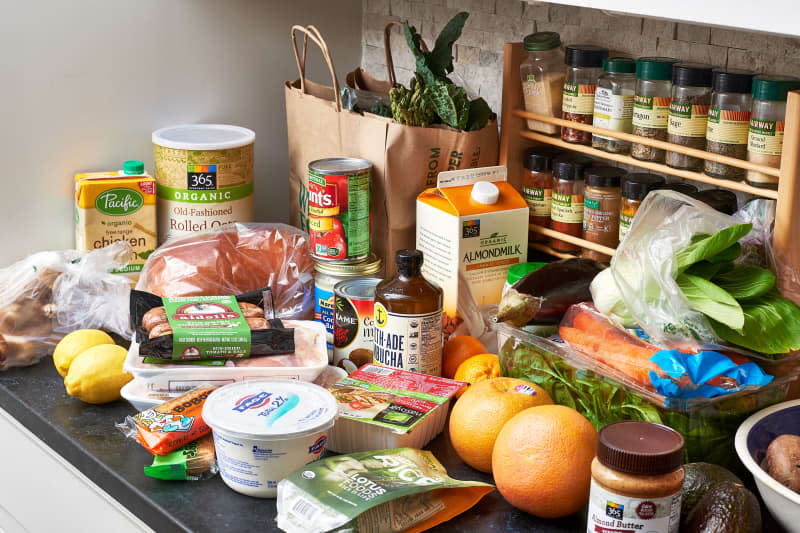
If you’ve ever worked in any industry involving food (or, heck, even regularly go out for food), you know that so much of what you see at restaurants, bakeries, and cafés often goes to waste. In fact, 40% of the United States’ food supply is wasted each year, which comes out to about 325 pounds per person. I saw this firsthand, when I worked at a cupcake shop in college where dozens upon baker’s dozens of cupcakes ended up in the trash each night; I’d often take a bunch home, using them once as a bartering tool with a pedi-cab driver to pay for a ride home or, more often, as a morning muffin (just scrape off the icing).
While I still wish I lived in a cupcake-bartering system (it really worked at the nearby coffee shops, the pizza place, and even Sephora), it’s simply not the case in most food establishments. That is, until Too Good To Go, a food-waste app, decided to provide the next best thing. I decided to try the service firsthand to see how $35 of my grocery budget spent on Too Good To Go fed me throughout the week. Spoiler: It ended up feeding me pretty well.
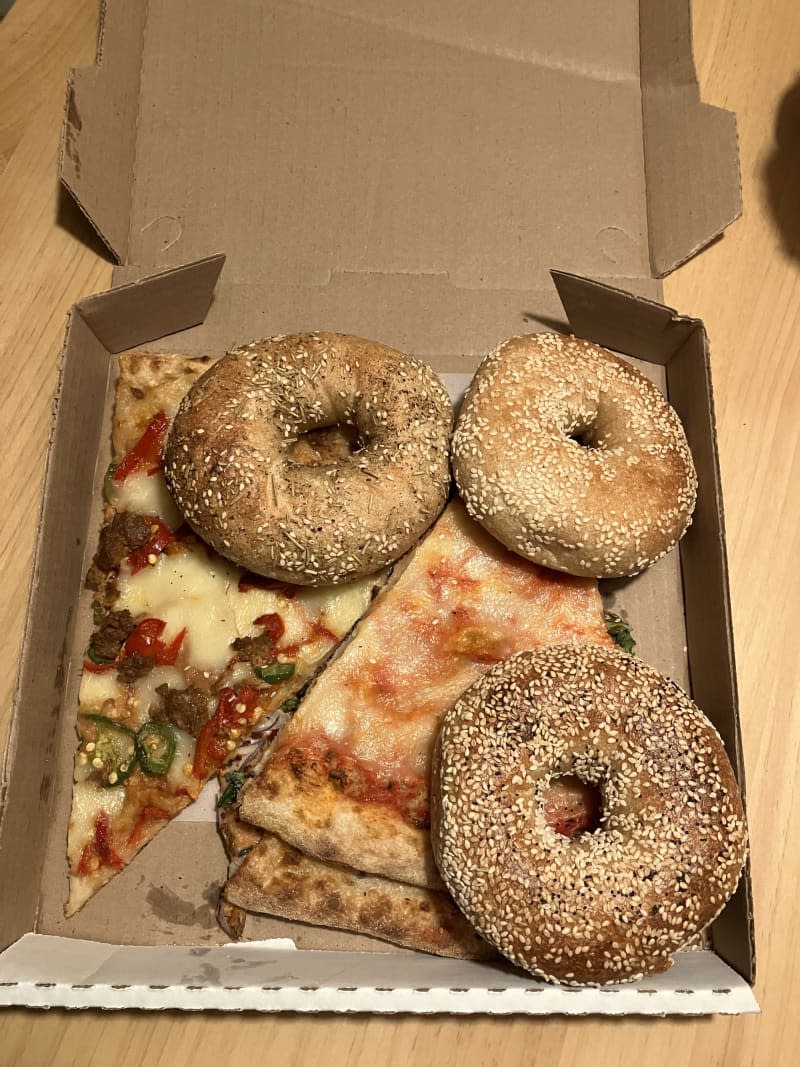
But First, What Is Too Good To Go?
Too Good To Go is an app that allows people to buy surplus food (aka what didn’t sell) from restaurants, bakeries, cafés, and even grocery stores at a discounted price. In 2023 alone, Too Good To Go saved over 121 million meals, according to the company’s impact report. Ranging from around $5 to $10 per “surprise bag,” you simply reserve your order day-of, head to the restaurant in question during a designated pickup time, and claim your order. It is pickup-only where I live in Los Angeles, although some cities offer delivery.
The surprise bags really are a surprise. You might have a slight hunch of what you’ll get (as I did at the combination pizza-bagel restaurant — I got bagels and pizza slices), but most ingredient details and even the entire contents of your order are unknown until you open your bag (or box). I did notice a few clearly labeled vegan-friendly options at different restaurants, but descriptions of gluten-free or other requirements were case-by-case and often rarely noted.
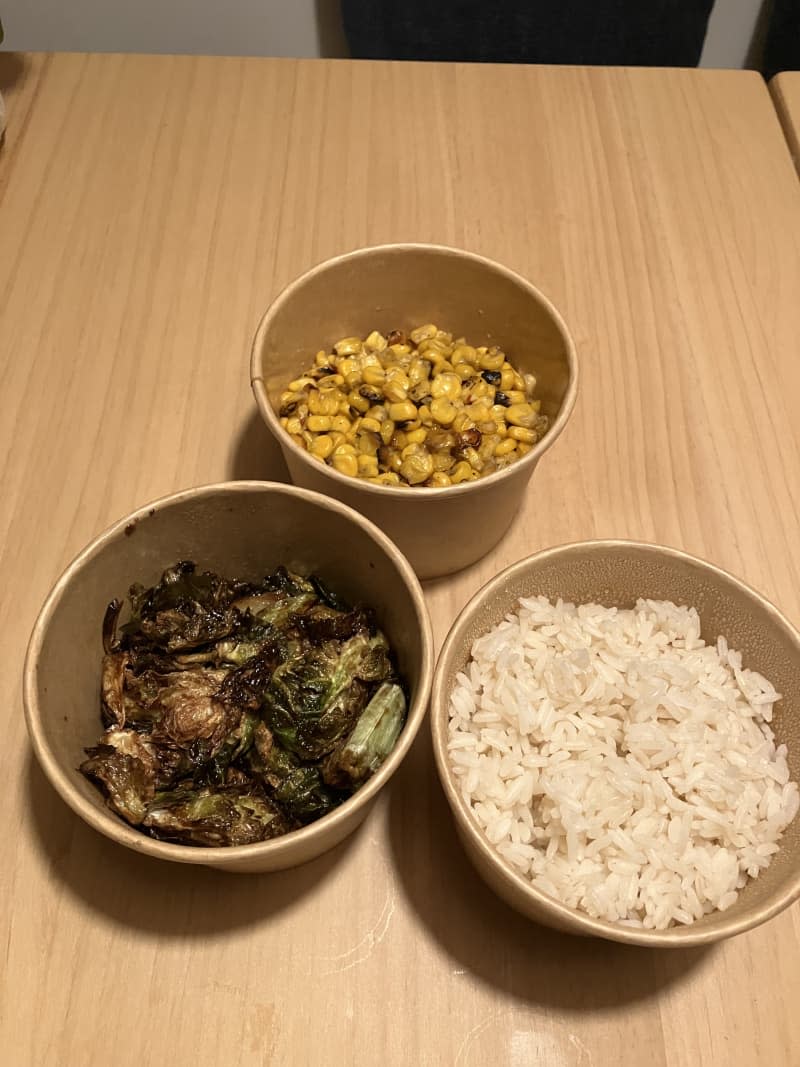
What Can You Find on Too Good To Go?
“What can’t you find on Too Good To Go?” is the better question, actually. Imagine a place that sells food near you, and there’s probably a vendor like it on the app. For instance, near me, I can reserve surprise bags from the following: IKEA’s cafe, a natural foods grocery store, a juice bar, many donut shops, a commercial kitchen, and a pizzeria.
That’s just the start, too. In the week I tested out Too Good To Go, I also spotted daily surprise bags from new vendors, such as catering companies, sushi restaurants, and taquerias. Of course, some of the more popular places sell out quickly — namely the nearby grocery store, juice bar, and IKEA (still trying to reserve those speedily!). Still, there are usually plenty of options each day, although most often it was baked goods such as donuts, pastries, and bagels.
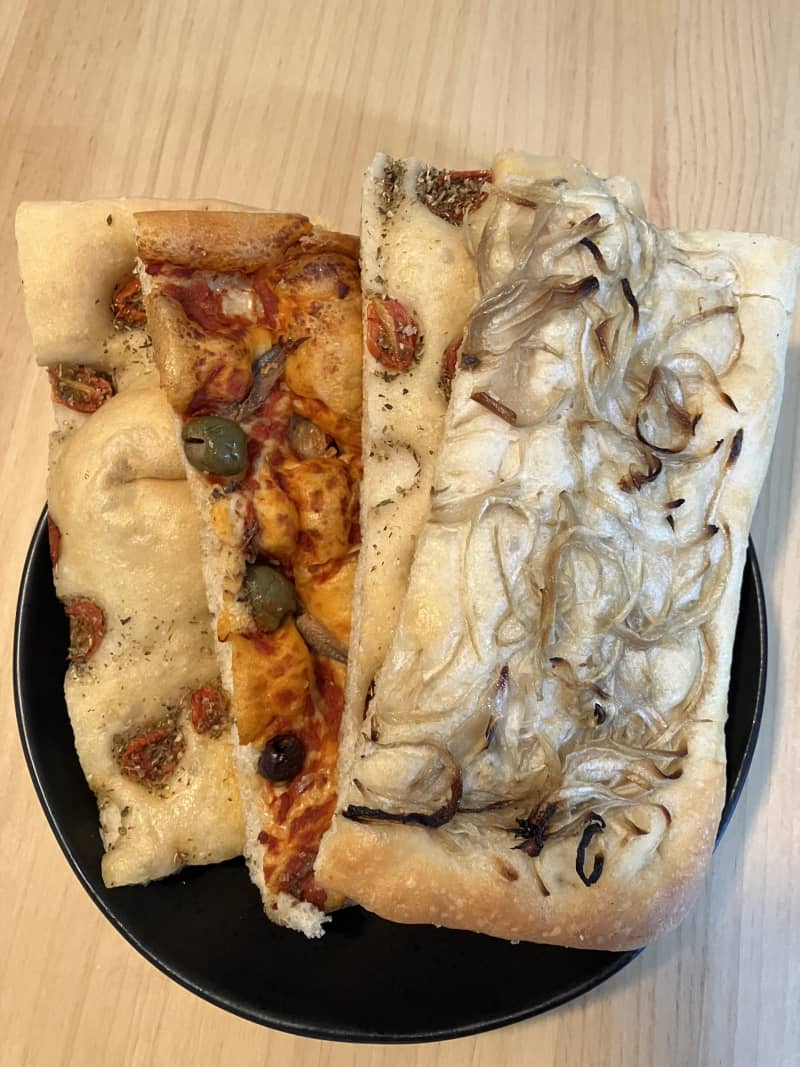
What I Ordered on Too Good To Go
For my experiment, I used the app to replace some of my usual weekly grocery shop, ordering mainly from commercial kitchens and fast-casual restaurants, passing on the donuts — this time. None of the locations were further than five miles away from my apartment. I also supplemented with a few of my own groceries to round out these often carb-focused meals (more on that below).
Here’s what I picked up, where, and how it factored into my meals for the week.
Ceci’s Gastronomia: Four huge slices of fluffy focaccia, covered in olives, fennel, and tomatoes, which turned into an amazing base for Detroit-style pizza slices. Typically, a slice is between $4 to $5 each, but I scored all four focaccia for $6.99 (or roughly half-off).
California Fish Grill: Three containers of sides (rice, roasted Brussels sprouts, and roasted corn), which I used for burrito bowls and making esquites. The sides regularly go for $3.50 to $5.25 each; I got all three sides for $4.99 — essentially three for the price of one.
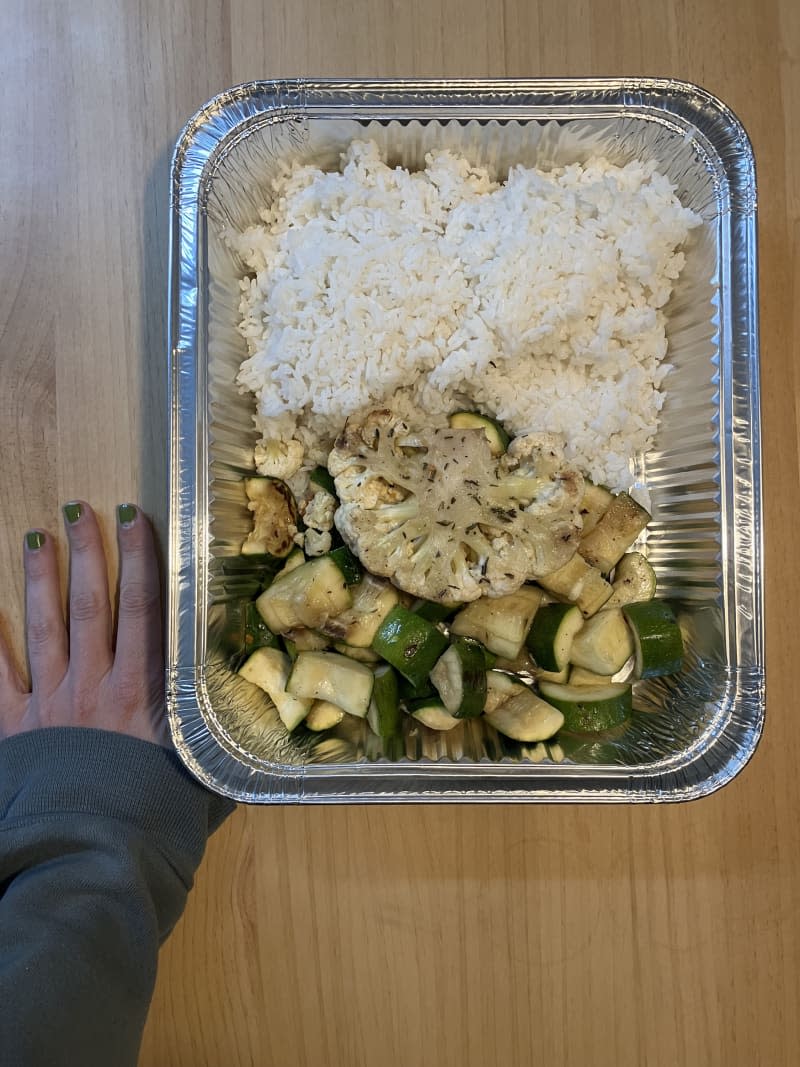
Marbled LA Commercial Kitchen: A large container of steamed rice, roasted cauliflower, and roasted zucchini, which I used to make many, many stir-fries and even froze some leftovers. This entire container of catering-style food was $10.99.
Bagel + Slice: Five slices of pizza (including one vegan one!), which I basically ate for lunch all week long as well as three bagels (that I froze for later when friends stay over). Bagels at this restaurant go for $3 to $4 each and slices are $4 to $5 each, but the bagels and pizza slices I ordered were just $9.99. That’s like buying three bagels and getting five pizza slices free!
I spent $35.50 (including tax) using the Too Good To Go app for the week. Like I said, I also balanced out these more carb-forward orders with a few ingredients from my latest grocery shop, including salad supplies (spring mix, baby carrots, dressing) to go with my pizzas, canned beans and eggs to go with the rice and vegetables, plus mayo and cotija to make esquites. I’d say these items roughly cost between $20 and $25.
My Honest Review of Too Good To Go
Overall, I was very pleased with the selection of options during the week, although I needed to be savvy about reserving speedily (each restaurant has different times they’ll allow you to reserve a bag). Even still, my fridge was overflowing with shortcuts for workday lunches, brunch options for guests, and fancied-up dinner ideas. By and large, everything I picked up was restaurant-quality good and way cheaper than takeout or buying the groceries to make a similar from-scratch dish at home.
I’d say I easily reduced my food budget by nearly 40% (and $40!) for the week. Typically, I spend $70 on groceries, and between $25 to $30 on takeout each week. But the week of my experiment, I ended up spending a total of $60.50 for groceries and takeout, via the Too Good To Go app.
Regardless of the savings (which are a nice bonus), I’m a new fan of Too Good To Go. It feels great knowing I’m helping to keep food from going to waste. It also got me exploring new corners of the city, especially neighborhood spots I’d been meaning to try, for a fraction of the price. So while I’ve still yet to delight in scoring some almost-trashed IKEA cinnamon rolls, I know it’s only a matter of time until I get my hands on some.
Have you tried the Too Good To Go app? Tell us about it in the comments below.

